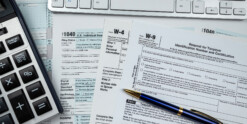How much can you withdraw annually from your investment portfolio in retirement without ever running out of money? For more than two decades, 4% has been the widely accepted rule of thumb, assuming that you have a classic retirement asset allocation of half stocks and half bonds. But with inflation rising, plus the possibility of a recession and bear market in the next few years, you need to make some tweaks…
Start with the original approach. During the first year of retirement, withdraw 4% of your portfolio. Every following year, withdraw the same initial dollar amount plus an increase for inflation. Example: If you have a $1 million portfolio, you withdraw $40,000 the first year…and if inflation that year is 3%, then the next year you withdraw $40,000 plus 3% of $40,000 ($1,200) for a total withdrawal of $41,200. You repeat these steps, using the previous year’s total withdrawal and inflation rate, every year.
Veer from the original approach if your portfolio has a very bad or very good year. How to do it: At the end of each year, divide the total amount of that year’s withdrawals by the current value of your portfolio to get a percentage. If the withdrawals totaled 5% or more of the current value of the portfolio, you’re in danger of burning through your savings too quickly, so you should reduce your total withdrawal amount for the next year to 4% of the portfolio’s current value (instead of 4% of the original value) plus the usual adjustment for the previous year’s inflation.
Example: Say that during the second year of retirement, you withdrew $41,200 based on your initial 4% amount plus the previous year’s inflation. But at the end of that second year, you see that your portfolio value has dropped to $800,000. That means your withdrawals added up to 5.15% of the portfolio’s current value—too much! So in the coming (third) year, withdraw no more than $32,000 (4% of the current portfolio value) plus a boost for inflation based on the inflation rate in the second year.
On the other hand, if your withdrawal amount over the past year came to 3% or less of the current value of your portfolio, you could splurge and take out more money in the third year using the same 4% formula—meaning, 4% of the current value of the portfolio plus an extra amount based on the previous year’s inflation.
With these adjustments each year, over a 35-year period you would have greater than a 95% chance of not running out of money, based on historical returns of stocks and bonds.
The original Bottom Line Inc article appears here.
Disclosure: This information is provided to you as a resource for informational purposes only. It is being presented without consideration of the investment objectives, risk tolerance or financial circumstances of any specific investor and might not be suitable for all investors. Past performance is not indicative of future results. Investing involves risk including the possible loss of principal. This information is not intended to, and should not, form a primary basis for any investment decision that you may make. The information contained in this piece is not considered investment advice or recommendation or an endorsement of any particular security. Further, the mention of any specific security is solely provided as an example for informational purposes only and should not be construed as a recommendation to buy or sell. Always consult your own legal, tax or investment advisor before making any investment/tax/estate/financial planning considerations or decisions.
This article is being reproduced and made available with the permission of Bottom Line. The article was written and produced by Bottom Line. This information is provided to you as a resource for informational purposes only and should not be viewed as investment advice or recommendations. Investing involves risk, including the possible loss of principal. There is no guarantee offered that investment return, yield, or performance will be achieved. There will be periods of performance fluctuations, including periods of negative returns. Past performance is not indicative of future results when considering any investment vehicle. This information is being presented without consideration of the investment objectives, risk tolerance, or financial circumstances of any specific investor and might not be suitable for all investors. This information is not intended to, and should not, form a primary basis for any investment decision that you may make. An investor should always consult their investment professional to determine what is suitable for their specific situation. Investment decisions should not be made based on information contained in this article. The information contained in the article is strictly an opinion and for informational purposes only and it is not known whether the strategies will be successful. There are many aspects and criteria that must be examined and considered before investing.













